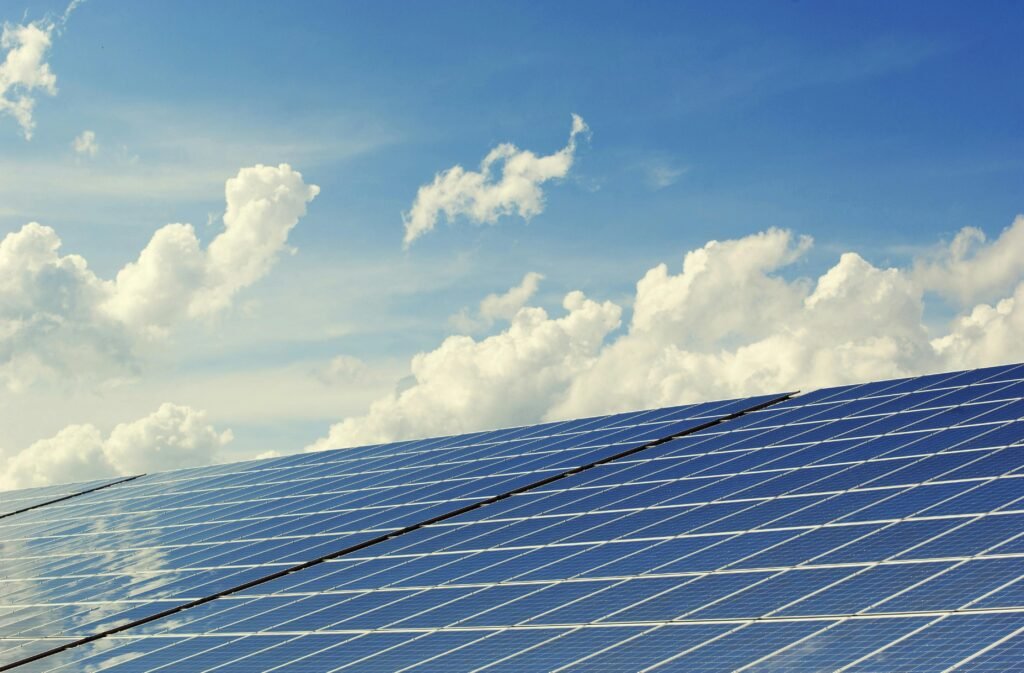Introduction
Commercial solar installations are transforming the way businesses consume and manage energy. By harnessing the power of the sun, companies can significantly reduce their energy costs, minimize their carbon footprint, and demonstrate a commitment to sustainability. This article explores the various aspects of commercial solar installations, including their benefits, the installation process, available incentives, and the future of solar energy in the commercial sector.

The Benefits of Commercial Solar Installations
Cost Savings
One of the primary benefits of commercial solar installations is the potential for substantial cost savings. By generating their own electricity, businesses can reduce or even eliminate their reliance on grid power, leading to lower utility bills. Over time, the savings on energy costs can offset the initial investment in solar panels, making it a financially sound decision for many companies.
Environmental Impact
Commercial solar installations contribute to a reduction in greenhouse gas emissions and other pollutants associated with traditional energy sources. By opting for solar energy, businesses can decrease their carbon footprint and support global efforts to combat climate change. This environmental responsibility can also enhance a company’s reputation and appeal to eco-conscious consumers.
Energy Independence
With a commercial solar installation, businesses gain greater control over their energy supply. This energy independence provides a hedge against rising electricity prices and potential supply disruptions. Additionally, solar power systems with energy storage solutions can ensure a continuous power supply during outages, enhancing operational resilience.
The Commercial Solar Installation Process
Site Assessment
The first step in the commercial solar installation process is a thorough site assessment. Solar energy experts evaluate the building’s roof or available land to determine its suitability for solar panels. Key factors considered include sunlight exposure, shading, roof condition, and structural integrity.
System Design
Once the site is deemed suitable, engineers design a custom solar power system tailored to the business’s energy needs and the site’s characteristics. This design includes the number and arrangement of solar panels, the type of inverters, and any additional components such as mounting structures or battery storage.
Permitting and Approvals
Before installation can begin, businesses must obtain the necessary permits and approvals from local authorities and utility companies. This step ensures that the installation complies with all relevant regulations and safety standards.
Installation
The installation phase involves mounting the solar panels, connecting the inverters, and integrating the system with the building’s electrical infrastructure. Professional installers handle this process to ensure optimal performance and safety. Depending on the size and complexity of the system, installation can take from a few days to several weeks.
Inspection and Activation
After installation, the system undergoes a series of inspections to verify that it meets all regulatory requirements and operates correctly. Once approved, the system is activated, and the business can begin generating its own solar power.
Solar Power Incentives for Businesses
Federal Tax Credits
In many countries, including the United States, businesses can take advantage of federal tax credits to reduce the cost of commercial solar installations. The Investment Tax Credit (ITC), for example, allows businesses to deduct a significant percentage of the installation cost from their federal taxes.
State and Local Incentives
In addition to federal incentives, many states and local governments offer additional rebates, grants, and tax incentives to encourage the adoption of solar energy. These programs can further reduce the upfront costs and improve the return on investment for commercial solar installations.
Performance-Based Incentives
Some regions offer performance-based incentives, such as feed-in tariffs or renewable energy certificates, which provide ongoing financial benefits based on the amount of solar energy generated. These incentives can create a steady revenue stream for businesses with commercial solar installations.
Advances in Commercial Solar Technology
Bifacial Solar Panels
Bifacial solar panels capture sunlight on both sides, increasing energy production and efficiency. These panels are particularly effective in commercial installations where reflective surfaces, such as white rooftops or ground installations, can enhance energy capture.
Smart Inverters
Smart inverters provide advanced monitoring and control capabilities, allowing businesses to optimize their solar power systems’ performance. These inverters can communicate with energy management systems, enabling real-time adjustments and diagnostics.
Energy Storage Solutions
Energy storage solutions, such as lithium-ion batteries, are becoming more affordable and efficient. By integrating energy storage with solar power systems, businesses can store excess energy generated during peak sunlight hours and use it when needed, ensuring a reliable and continuous power supply.
The Future of Commercial Solar Installations
Increasing Adoption
As the cost of solar technology continues to decline and the benefits become more widely recognized, the adoption of commercial solar installations is expected to increase. Businesses across various industries are likely to invest in solar energy to reduce costs, enhance sustainability, and gain a competitive edge.
Technological Innovations
Ongoing advancements in solar technology will further improve the efficiency and affordability of commercial solar installations. Innovations such as more efficient solar cells, advanced materials, and improved energy storage solutions will make solar power an even more attractive option for businesses.
Regulatory Support
Governments worldwide are increasingly supporting renewable energy initiatives through policies, incentives, and regulations. This regulatory support will continue to drive the growth of commercial solar installations, helping businesses transition to cleaner and more sustainable energy sources.
Conclusion
Commercial solar installations offer a myriad of benefits, including cost savings, environmental impact, and energy independence. By investing in solar power, businesses can reduce their energy expenses, enhance their sustainability efforts, and gain greater control over their energy supply. With ongoing technological advancements and robust incentives, the future of commercial solar installations looks bright, paving the way for a more sustainable and resilient energy landscape.